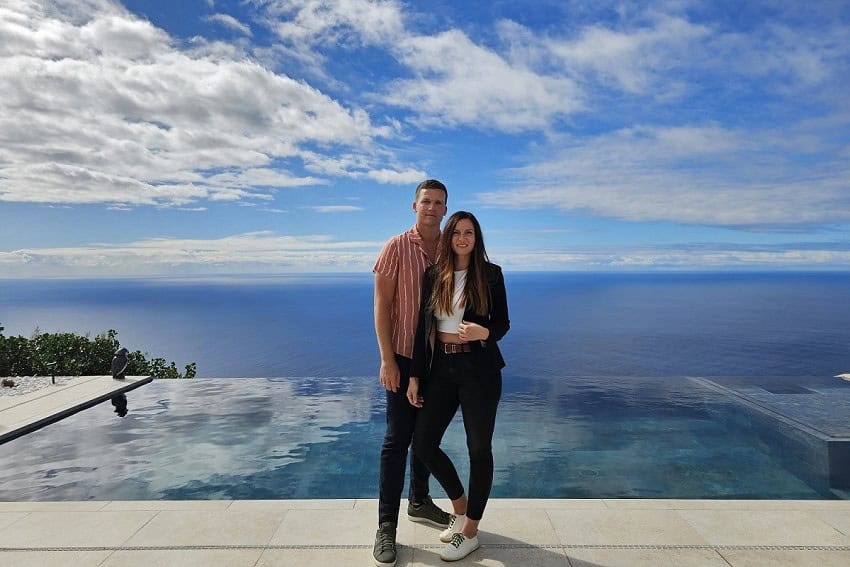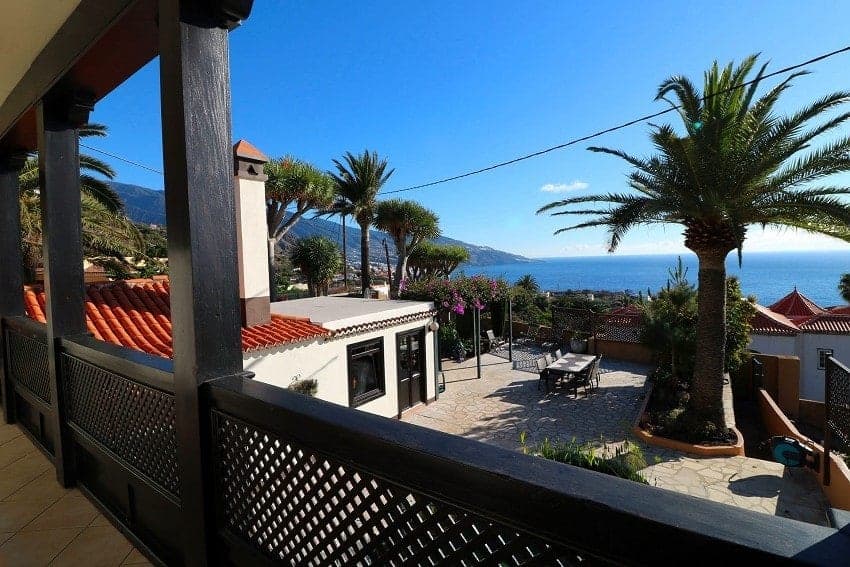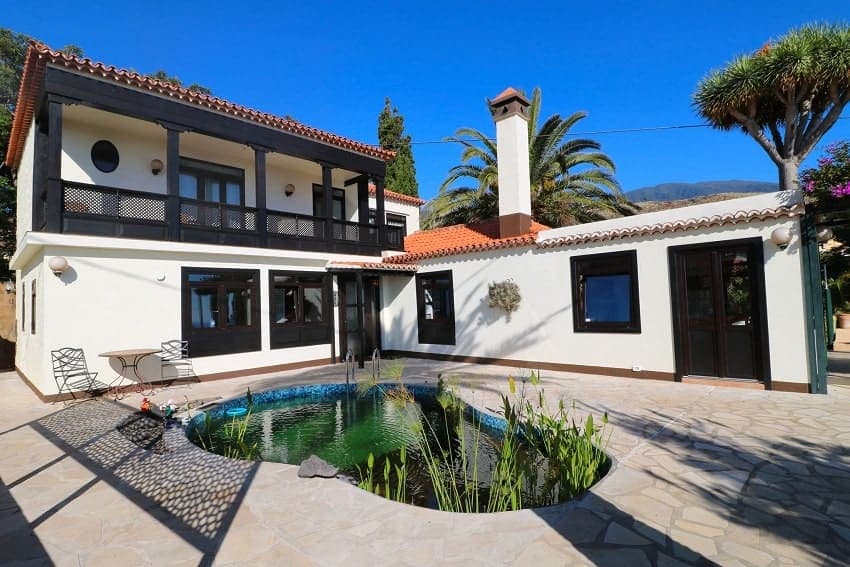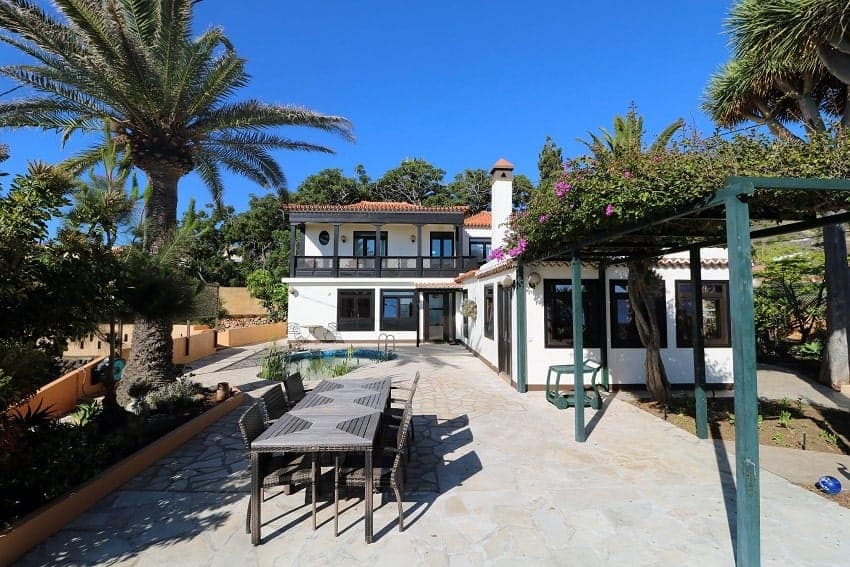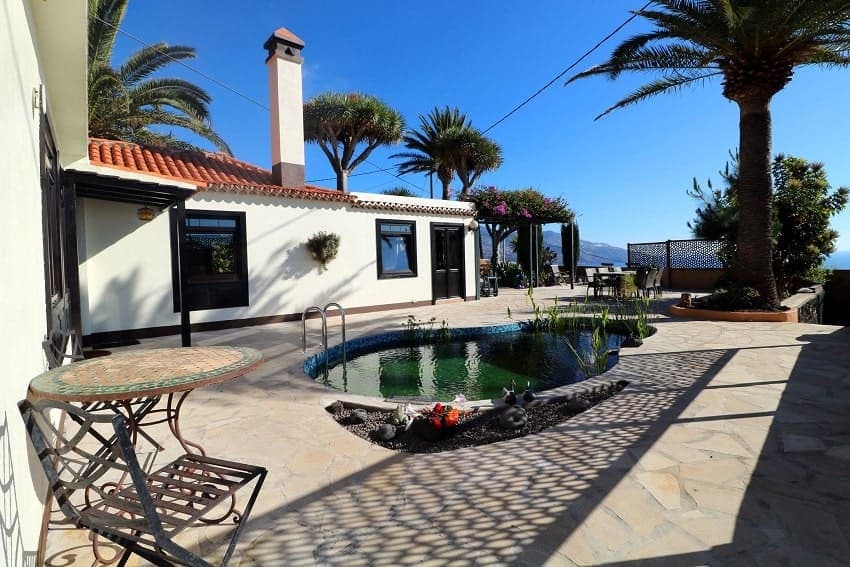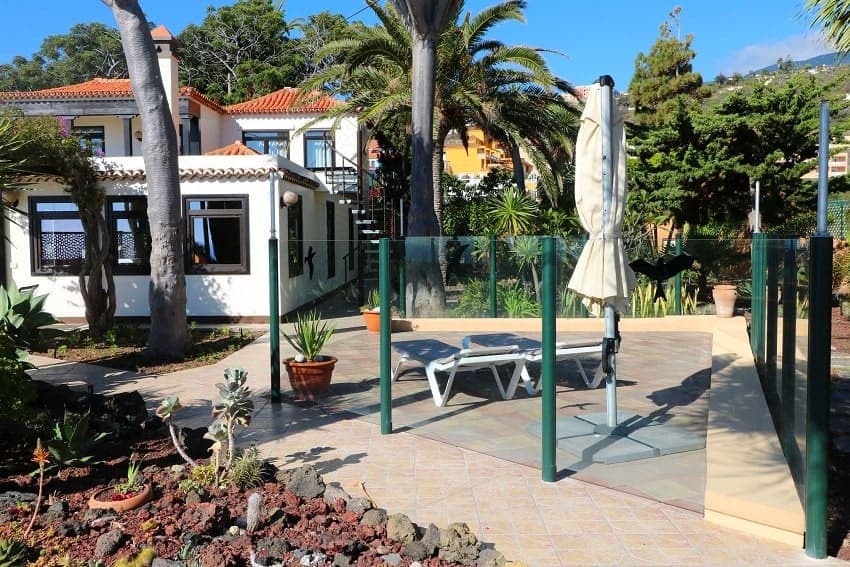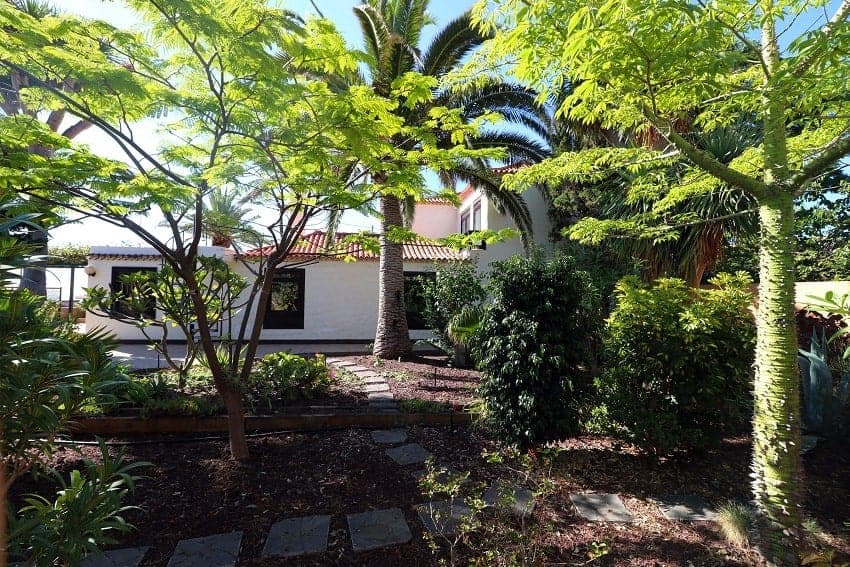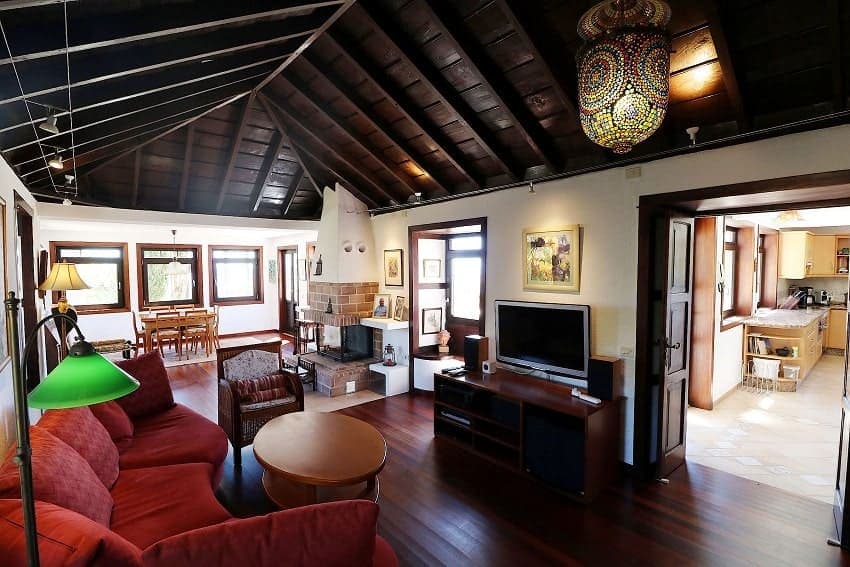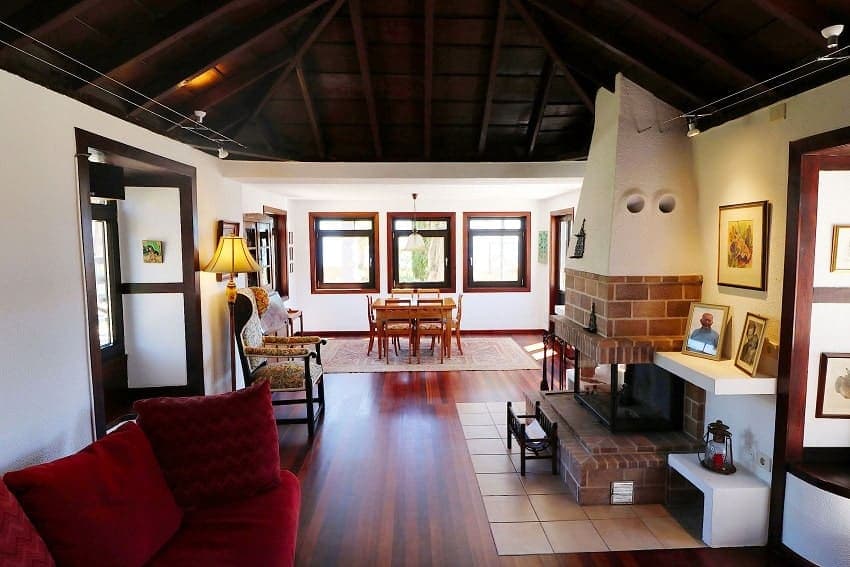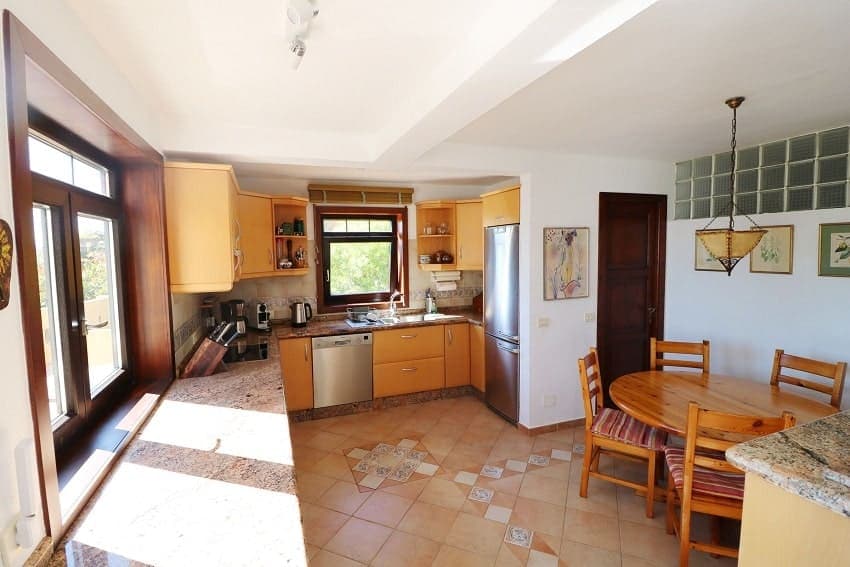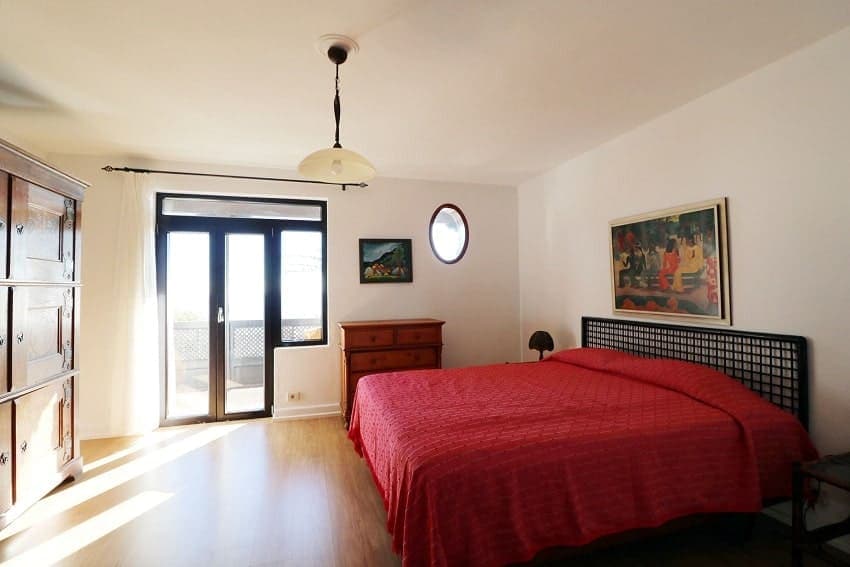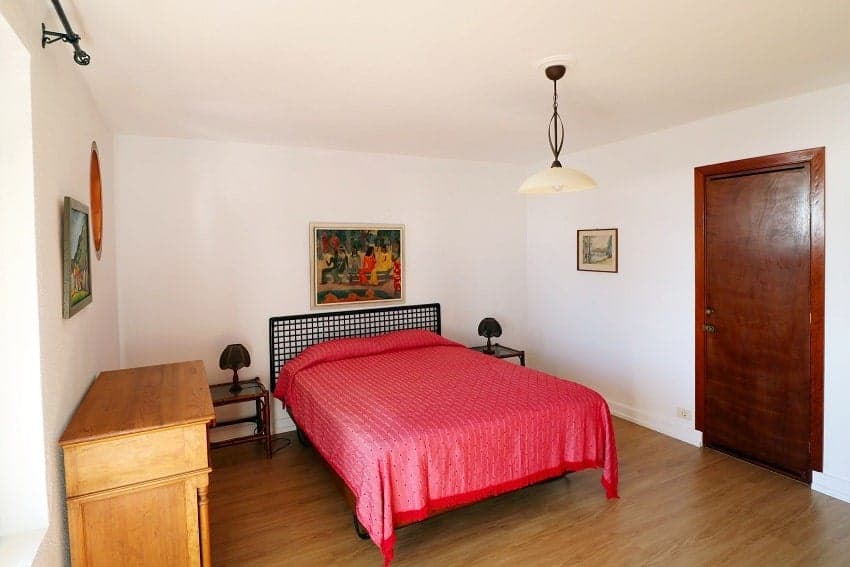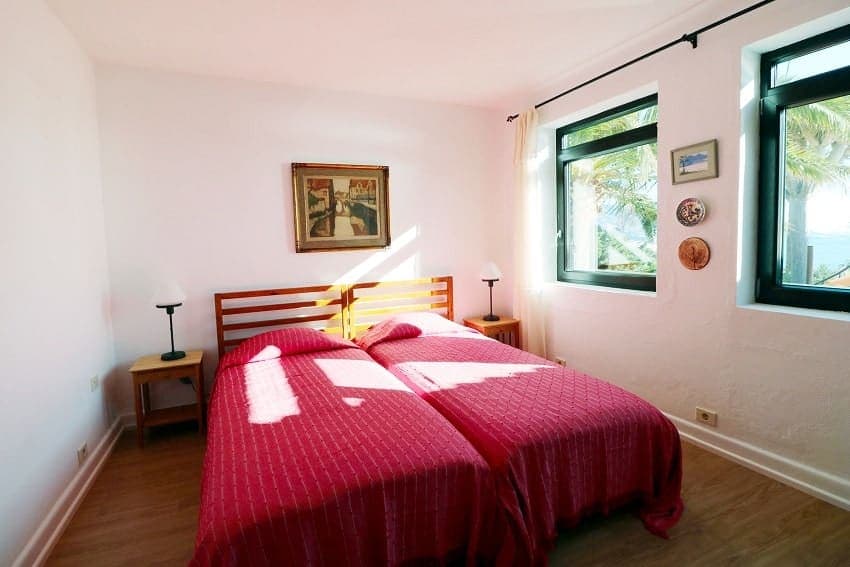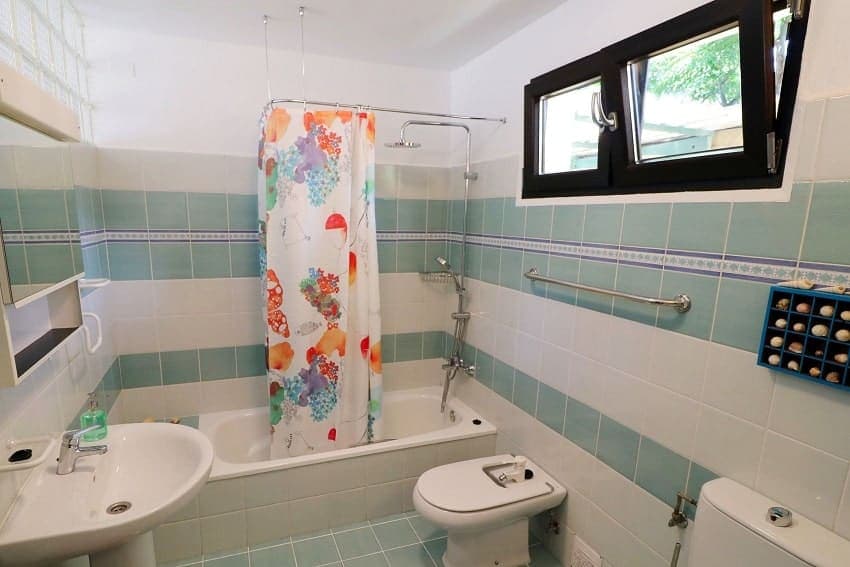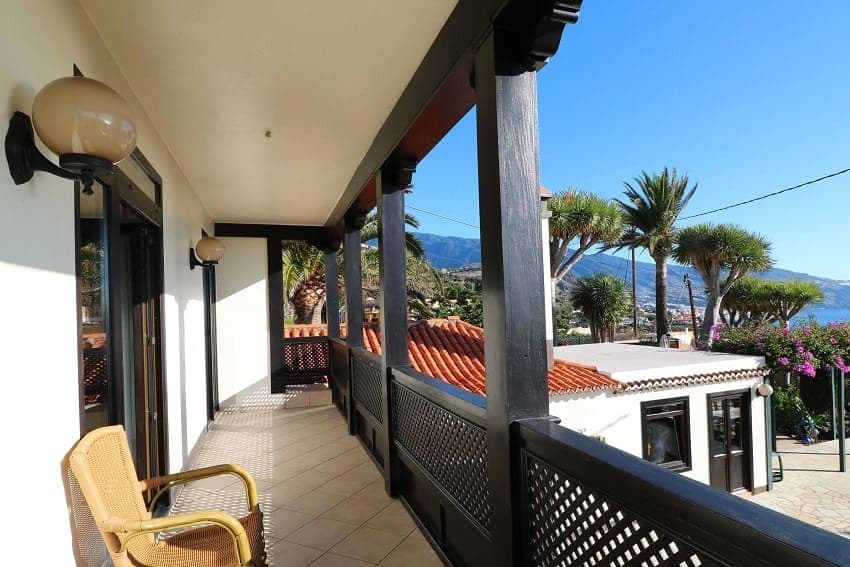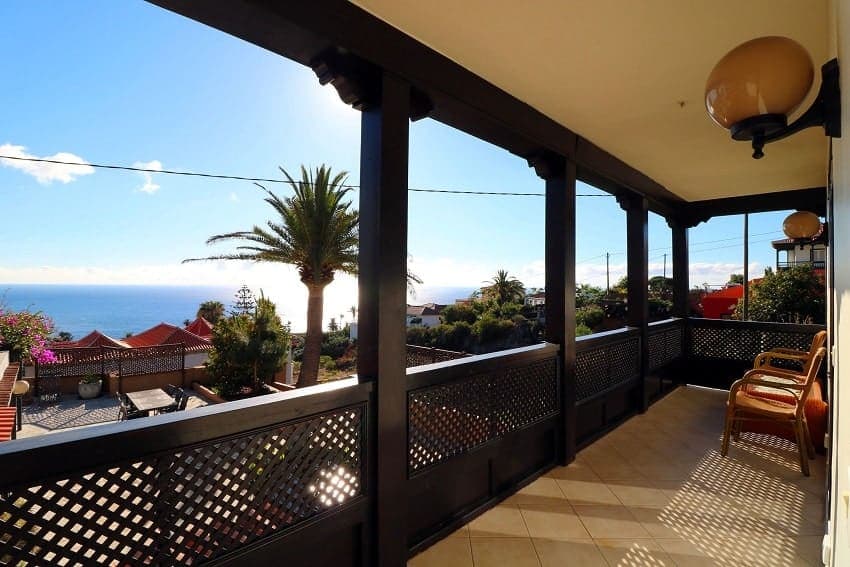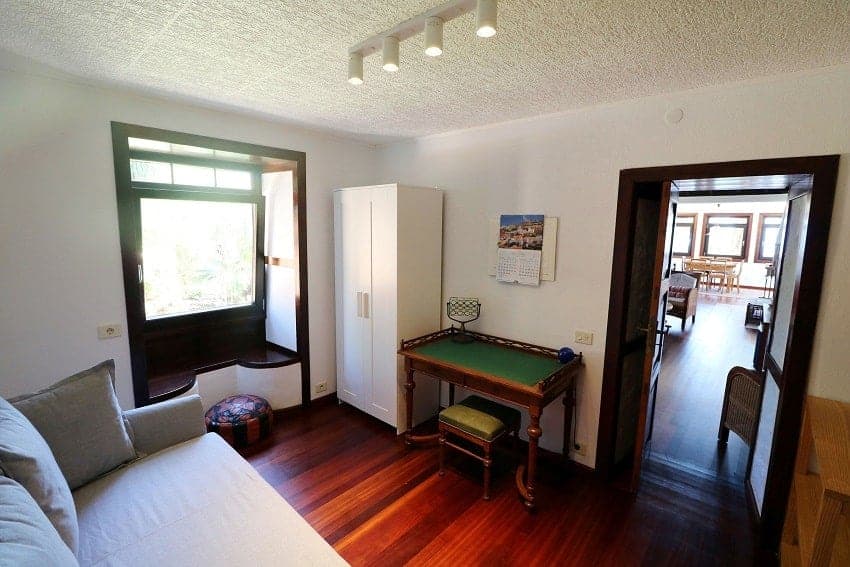Availability
Villa Escondida
 1
1  2 2
2 2 





On the east side of the island in San Antonio sits this spacious villa with fantastic views of the sea, a swimming nature pond and a beautiful, lush garden.
The name “Escondida” is the Spanish word for hidden, and the name is perfect for this villa because it‘s tucked away on a narrow, dead-end alley and is surrounded by evergreen trees and bushes.
The villa offers a wonderful view of the Atlantic Ocean and the island’s capital, Santa Cruz de La Palma. At just 150 m above sea level, the weather is always excellent and the temperatures are pleasant all year round.
In the villa‘s outdoor area, there are lots of different options for sitting or lying down so that you can relax. There is also a grill for barbecuing available. The unique swimming nature pond is home to two turtles and some fish.
The ground floor of the villa consists of a fully equipped kitchen, a living room with integrated dining area, a bathroom and a cosy room with a sofa bed.
On the upper floor of the house, you will find two bedrooms and a small bathroom. The balcony, which runs all the way around the villa, is the ideal place to relax or enjoy the sunrise.
Facilities
- 1 Double Bed 160x200
- 2 Bathrooms
- 2 Single Beds 90x200
- 3 Double Bedrooms
- Baby Cot
- Balcony
- Bed Linen & Towels are Provided
- Bidet
- Coffee Maker
- Dishwasher
- Dryer
- Fridge / Freezer
- Garden
- Grill
- Hair Dryer
- High Chair
- Internet - WiFi
- Iron
- Ironing Board
- Kitchen
- Kitchen with Integrated Dining Room
- Living Room with Integrated Dining Room
- Microwave
- Oven
- Pad Coffee Machine
- Private Swimming Pool
- Radio
- SAT-TV
- Shower
- Sofa
- Sofa Bed for 2 Persons
- Stove
- Sunbeds
- Terrace
- Toaster
- Washing Machine
- Weekly Linen & Towel Change
- Writing Desk
Internet
Location and Distances
Medical help
Check In / Check Out
Payment / Cancellation
Additional information
Accommodation review scores and score breakdown
Based on 2 reviews
Guest reviews are written by customers after their stay at Villa Escondida.
Guest reviews
-
23.02.2020
Ich bin begeistert von Jens und seinem Haus, als Gastgeber ist er herausragend!!! So eine freundliche und herzliche Begrüßung mit liebevollen denken an den Gast. Der Ort ist ruhig und so ein schöner Garten, gepflegt und liebevoll behandelt. Das Haus ist groß, der Pool einzigartig mit Schildkröten! Viel Platz zum entspannen und jede Ecke im Haus und außerhalb wundervoll gestaltet. Jens versteht was man braucht wenn es um Erholung geht. Die Betten wunderbar um in der Nacht zu entspannen! Nur 4 Min zum Meer zu Fuss oder mit dem Auto erreichbar. Danke dir lieber Jens für alles!!! Ich freue mich sehr dein Gast gewesen zu sein. Herzliche Grüsse Kathleen
-
10.12.2019
Wir hatten einen super schönen Aufenthalt auf La Palma. Die Unterkunft war sehr schön und sauber. Jens, unser Gastgeber, war sehr freundlich und konnte uns einige Tipps geben.
La Palma
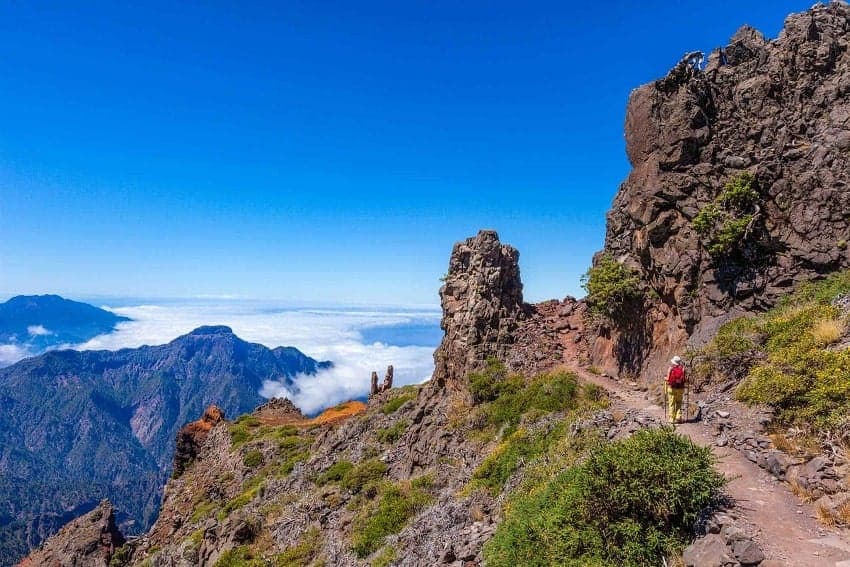
The island of La Palma offers breathtaking landscapes, remote beaches, imposing volcanoes, dense forests and incomparably starry skies.
With its 708 square kilometres, an elevation of 2.426m and its shape of a heart it is the most Western island of the Canary Island chain. Like every island in this archipelago, La Palma was created by volcanic activity. It is one of the youngest of the seven islands, dating back some 1.7 million years. The volcanic origin of La Palma is still clearly recognizable today, especially the southern part of the island with the dormant volcano Teneguía which last erupted in 1971, and offers interesting insights into its geological past.
The year-round mild climate with average temperatures between 18 and 27 degrees Celsius produce spring-summerlike weather as a result of the northeast trade winds.
This weather phenomenon is responsible for a pleasant subtropical climate and a rich green vegetation that prevails because of the humidity carried along in the trade winds. These moisture rich winds at certain times of the year also create a spectacular waterfall of clouds cascading down the central mountain faces and hence the nicknames Isla Verde – Green Island and Isla Bonita – Beautiful Island.
The unique geological structure of the island with its variety of vegetation zones and microclimates that are rarely found in the world on such a small area make this island a miniature universe. Each area of the island varies completely from another. In 1983 La Palma was declared a UNESCO biosphere reserve.
Another special feature of La Palma is the unique night sky. Due to its location in the Atlantic Ocean, sparse population, minimum light pollution and highest mountain peak Roque de los Muchachos 2.426m, the island was chosen as the location for one of the largest and modern observatories in the world.
The official population of the island is approximately 80,000 people. Traditional festivals such as the Bajada de la Virgen or Los Indianos carnival, famous far beyond the island’s borders, bear witness to the zest for life of the local people (Palmeros). Not only the geographical location, but also the numerous immigrants from Central and South America show a variety of Hispanic influences in island life, cuisine and cultural.
Read more...

